Art Deco – a term often thrown around with no real understanding. It’s the go-to when describing anything that vaguely resembles French design in the early 90’s. It just sounds good when it rolls off the tongue – right?
We think we know what it is, but it’s really a different story when it comes to actually describe the Art Deco style. You just have to see it.
Back in its day, Art Deco (or shall we say, Arts Décoratifs), changed pretty much everything. Up until this point, art and commodity were kept well apart. Art was to be hung on the wall and looked at. Art was to sit on a table and never be touched.
WHAT IS ART DECO
What Art Deco aimed to do and succeeded at doing was blur the line between art and something that we’d actually use. The concept of anything and everything being beautiful and becoming what we now recognise as ‘art.’
Art Deco transcended regions, countries and continents. Although deriving from France, its appeal was universal. Its universality is largely from its diverse cultural etymology. Its design inspiration could be found from all corners of the globe, and this is what made it such a design powerhouse.

Instead of creating something completely new from scratch, Art Deco put its existing design inspiration together and created something new and exciting. And the reason why it was so new and exciting is that it didn’t require the world to adopt an all new understanding of the design concept.
Because inspiration was drawn from all corners of the globe – there was a familiarity there. It was tried and tested design.
WHAT HAPPENED TO ART DECO
But just like any trend and as surely as it appeared, it withered away into the retro chic and antique collectibles that we see today.
So why are we using the word “was” in the title? There are still plenty of monuments to the Art Deco movement that still exist, such as the Empire State Building and The Chrysler Building in New York.
Art Deco struggled to move on. The design characteristics were so bold and unquestionably ‘art deco’ that it was difficult to evolve beyond this. A huge part of Art Deco movement was in its materials. The materials were expensive and rare, with ebony, ivory, terracotta and plate glass abundantly.
Over time (and largely because of the economic shock of the war), we moved away from using these types of materials in favour something more readily available and sustainable. It’s not uncommon for design to be the by-product of environmental factors. There’s a good reason why the ultra-modern and sleek architecture of today wasn’t found hundreds of years ago - in the same way that we no longer build houses from stone.
SO WHAT DOES THIS ALL MEAN?
As we’re sure many of you are aware, design trends come and go. Core fundamentals of design remain relatively the same but the actual characteristics change. These changes are almost always environmental. We, as a species, are changing. The way we respond to media is constantly evolving and changing.
While the core concept of sharing a message to an audience through the mechanism of design remains unchanged, the complex nuances have changed. The way it looks, the way it feels and what consumers have come to expect is an entirely different animal.
Art Deco was great in the 1920’s and 1930’s, but the world moved on. While environmental factors are changing consumer behaviour, consumer behaviour is also shaping the environment. We are the by-product of our own creation and we have the power to shape the next design movement.


